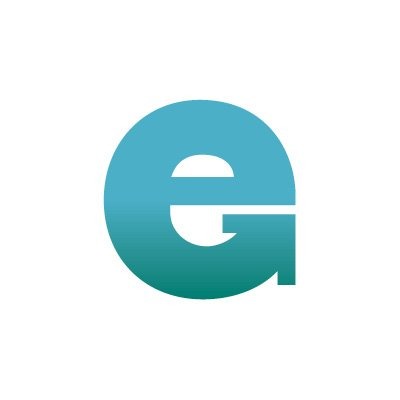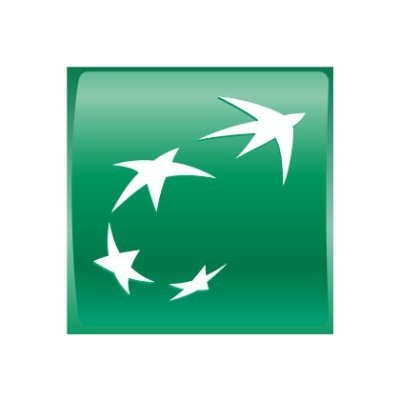search
date/time
 | Lancashire Times Weekend Edition |
1:00 AM 1st November 2025
business
Opinion
Market Analysis: Adidas, Evoke, Boeing, Airbus, Stellantis, Deutsche Bank, UBS, HSBC, BNP Paribas


Nike’s recovery, by contrast, remains sluggish. Third Bridge experts note that the brand’s comeback is taking longer than anticipated because it lacks fresh products and compelling innovations that connect with consumers. The company is paying the price for several years of prioritising efficiency over product development. Competitors such as Adidas and emerging running brands have taken advantage of this gap, expanding their shelf space and capturing share.

Evoke also has a clear opening to gain market share as smaller operators struggle under mounting compliance pressures. The cost of customer acquisition is rising and the regulatory burden is pushing weaker players out of the market.
Third Bridge experts note that, with new stake limits and tighter affordability checks, the days of VIP-heavy models and lavish welcome offers are over. Operators are now focusing on long-term value rather than volume. Our experts note that Evoke’s strategy of building loyalty among recreational players, backed by stronger customer relationship management and personalisation, aligns well with this transition.
Evoke still trails Flutter and bet365 in user experience and product agility. Third Bridge experts say the ongoing unification of its 888 and William Hill systems will be critical. Once completed, it should give the company the scale and flexibility needed to somewhat narrow the gap to market leaders, but direct market share competition is unrealistic.

While Boeing's reported loss was staggering, the company did achieve two important milestones in the third quarter. From an operational standpoint, the 160 planes delivered was the biggest quarterly figure since the 737 MAX tragedies in 2018. From a financial perspective, the free cash flow of $238 million broke a streak of six consecutive quarters where Boeing burned through cash reserves. Nothing is ever straightforward with Boeing, and the $4.9 billion charge for the 777X certification dragged the company into an accounting loss of $5 billion for the third quarter. The charge is not a major surprise but it did lead to a wider loss than street forecasts.
On the positive side, the 160 Boeing planes delivered exceeded expectations by 5, leading to an upside surprise in revenues of about 4%. Stronger deliveries released inventory--the biggest quarterly drop in six years--and the result was stronger cash flow. The 737 program has stabilized with production at 38 planes per month and agreement with the FAA to take that up to 42. While Third Bridge experts question Boeing's ability to move meaningfully beyond that level, the steady operations and cash flow that comes with this operational achievement will be welcomed by investors. The 787 program is on track, but the updated assessment during the quarter on the 777-9 pushed deliveries into 2027, resulting in the charge.
Beyond the Commercial Airplanes segment, Boeing is steady. The Defense, Space & Security segment achieved its third consecutive quarter of modest profitability, while Global Service & Support continues to be the most consistent performer at the company with sustained high teens operating margins.
Boeing is making progress both from an operational and a financial perspective. A year ago, when the company was looking to raise capital to shore up its balance sheet, there were doubts that free cash flow could be achieved during the back half of 2025. On that front, Boeing has proven the doubters wrong. In order to achieve the next level of profitability and cash generation, Boeing still has some work to do, but the core operations have clearly stabilized, putting the company in a vastly improved financial position.

However, Airbus has a few tricks up their sleeve, our experts tell us. One is the gliders (planes with no engines waiting to be shipped) which sits at the highest levels since during the pandemic; second is the acquisition of Spirit AeroSystems which goes someway towards stabilising production of A350 and A220s; and third is the slow but structural tailwind of improving supply chains and the health of the industrial base still recovering from the pandemic all these years later.
Down the line Airbus faces a number of challenges. In commercial aerospace, experts point to engines continuing to plague the ramp up due to capacity constraints on nickel and titanium parts. With the scaling up of the new entrance to the market - China’s homegrown narrow body plane the C919 from COMAC - our experts say pressures will come from the battle for new LEAP engine capacity from CFM but also from market share gains made by COMAC in China - a typically very profitable and high growth market for Airbus.
In the Defence & Space division, our experts are increasingly sceptical on FCAS, the future fighter jet collaboration between France, Germany, and Spain, judging the expanse of the role of Airbus to be drawn into question recently. Additionally, the space business has taken sizable losses last year owing to restructuring costs that address what Third Bridge experts characterise as a long term trend of declining competitiveness in both capability and pricing vs US counterparts in satellite geostationary infrastructure.

Margins are expected to remain under pressure. Third Bridge experts say Stellantis will struggle to return to its earlier double digit profitability, with operating margins likely to hover between 5 and 7 percent over the next few years. The rising share of battery electric vehicles in its portfolio, necessary to avoid EU emissions penalties, will continue to weigh on earnings, given that EV margins remain significantly lower than those of traditional models. With government incentives fading and electric cars still priced above petrol and diesel equivalents, demand in Europe is expected to stay subdued, making cost control and localisation critical for Stellantis’s long term competitiveness.
The joint venture with China’s Leapmotor offers potential upside, providing Stellantis with access to advanced battery technology, software expertise and faster development cycles. Leapmotor’s decision to begin production in Europe could also help the group strengthen its presence in the region. However, experts warn that consumer acceptance remains uncertain.

Despite results appearing positive, our experts have highlighted numerous headwinds. One of the largest is that their tech stack could hinder progress and require substantial capital investment to modernise. Our experts also believe the culture is difficult to adapt to, with new hires underperforming, potentially harming their M&A growth strategy. The Global Hausbank strategy has been cited as another area of concern, with weak cross-selling, and a lack of products vs US competitors, another barrier
Tailwinds going forward should be German Infrastructure spending, which Deutsche are well placed, with our experts believing it could generate EUR c500m annually, with the impact to be felt in 5-6 years. FIC momentum is also key, based on market environments, and clients' desires to diversify concentration away from the US.

Wealth management, which accounts for over 50% of their revenue, continues to perform with NNA for Q3 at USD 38bn, putting them in arm's length (USD c7.2bn) away from their USD 100bn 2025 target, despite outflows in the US. APAC fuelled the growth, which should be positive as our experts believe it is key for asset expansion, alongside the US. Acquiring the OCC national banking charter is critical for growth in the US through product expansion.
As the Credit Suisse account migrations look set to be completed in Q1, our experts have highlighted strong execution so far. They believe that with Iqbal Khan being Co-President of Wealth Management, UBS culture has evolved to a more entrepreneurial and sales-led culture that was found at Credit Suisse, and they believe this is positive for growth going forward.
UBS gave an update to their TBTF regulatory process, and this will be key to watch going forward. Our experts believe the final capital requirements could land somewhere halfway from the initial $42 billion figure. An outcome in this range would still heavily impact the bank's competitive positioning, primarily on the lending side, affecting products like Lombard Loans.

Revenue beat consensus expectations by 5.9%, with strength across both net interest income and fees. The $1 billion upgrade to NII guidance should be well received, reflecting how the bank’s streamlined operating model is driving greater efficiency and returns.
Our experts have highlighted leadership in transactional banking, though continued market exits, caused by their shift toward more profitable regions could weaken the global network model that underpins its long-term income potential.
Headwinds the group’s defensive strategy, focused on reallocating growth to more profitable regions, runs counter to its traditional global network model, which could limit longer-term income opportunities and wallet share capture.
Hang Seng Bank acquisition strengthens control over semi-impaired commercial property loans and signals renewed confidence in Hong Kong’s recovery.

The CIB division performed well, though strong top-line growth was offset by higher cost of risk and provisioning. Market conditions remain a double-edged sword. Volatility continues to support near- and mid-term performance, but weak M&A activity and subdued debt issuance remain headwinds for BNP’s core financing business.
Looking ahead, our experts expect its push into US advisory to achieve meaningful scale by 2030, though acknowledge that such investment is essential to offering a full suite of services. Higher fiscal spending, particularly on defence, is unlikely to impact BNP’s 5% revenue CAGR target by 2026, though a potential tailwind could emerge over the next three to five years. The group is well-positioned to finance defence-related projects.
Our experts highlighted cross-selling remains weak, though gradually improving. Experts note that growth through acquisitions such as AXA IM has introduced integration challenges and additional complexity. Achieving full cooperation across business units will require continued investment and time.
Third Bridge is a global primary research firm that interviews more than 6,000 internationally recognised industry experts and business leaders a year to compile 360-degree market intelligence for institutional investors. www.thirdbridge.com